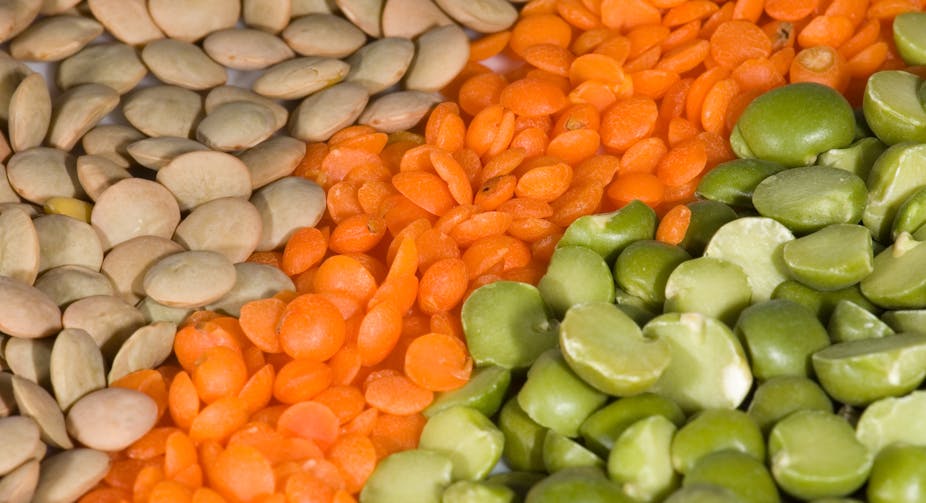No matter where in the world you live, chances are you’ve eaten “pulses” some time in the last week. These foods, otherwise known as “food legumes” or “grain legumes,” have been a part of the human diet since at least 11,000 BC. But new research by Aleksander Mikic in the journal PLOS ONE shows their importance goes way beyond mere sustenance.
For Mikic, a researcher at the Serbian Institute of Field and Vegetable Crops, the story of pulses is, in many ways, also the story of modern humans. These plants were likely a vital source of nutrition to the ancestors who dispersed across Europe, carrying with them the cultures that gave rise to those we know today.
One part of those cultures is language: experts believe more than 300 different languages have emerged on the European continent, all descendants of a common ancestor known as Proto-Indo-European.
Although researchers are not entirely certain where Proto-Indo-European speakers came from, it seems likely they dwelt in the Pontic-Caspian steppe (see map below) – an area of some 994,000 square kilometres – from 4500 BC, after which they radiated out across the rest of the continent, taking with them both their crops and their ways of speaking.

In order to try to understand the paths that migrants might have followed, as well as the preferences of different groups for particular species of pulse, Mikic performed a massive literature search, investigating the etymologies of all words associated with pulse crops and leguminous plants.
He targeted all languages spoken in Europe, including those in the Albanian, Armenian, Baltic, Celtic, Germanic, Hellenic, Indo-Iranian, Italic and Slavic branches.
All told, he sorted through sources associated with approximately five dozen current languages, as well as the ancestral forms that gave birth to them. This allowed him to compile a massive list of words indicating “pea,” “lentil,” “field bean,” and other lesser-used pulse crops.

While it is interesting to trace the paths of particular root words – from, for instance, *bhabh to “bean” – the results are even more meaningful when you look at broad patterns within the different “offspring” languages of Proto-Indo-European, and make comparisons between the “siblings”.
The Indo-European language family had the greatest number of original pulse crop root words, while the Uralic languages – such as Estonian, Finnish, and Hungarian – tended to borrow pulse words from their neighbours.
This suggests Uralic language speakers were introduced to their words – and possibly also new agricultural practices – by migrants moving into their area.
The meanings of the roots also highlight how pulses were perceived by our ancient ancestors.
*Bhabh, for instance, indicated “swollen” or “swelling,” and is clearly a description of bean pods. One Proto-Uralic root word denoting “pea” (*kaca) roughly translates as “hole, cavity” and “a wooden vessel,” and seems to refer either to the process of plucking peas from the pod, or to the empty pod that remains once this has been done.
Mikic’s study provides additional support for the idea that species such as the pea, lentil and field bean were well-known and farmed by our early ancestors.
But unlike previous authors, Mikic used language, not archaeological or archaeobotanical evidence, to come to this conclusion. This is an exciting development for historians as plant matter tends to degrade relatively quickly.
The success of Mikic’s techniques indicates that words, which he describes as “remarkably well-preserved in both morphology and meaning,” can help fill the gaps left by a spotty artifact record.
Human-pulse relationships
Mikic’s results also suggest human-pulse relationships were not the same everywhere. The words for “lentil” and “field bean” in the Uralic languages tend to derive from roots meaning “pea,” indicating that the pea was the initial pulse of choice among ancestral Uralic tribes.
But Caucasian languages tended to put a more even emphasis on “pea” and “field bean,” with very few words uniquely indicating “lentil”.

This sort of information may benefit plant geneticists who are interested in locating regions of high crop diversity, allowing them to identify and preserve rare ancestral traits; these genetic and evolutionary data are also valuable for those seeking to better understand biodiversity.
By placing etymological information on top of geographical maps of the European continent, Mikic was able to create “routes” of linguistic evolution; these likely reflect the physical routes taken by both our early ancestors and their agricultural products.
The bulk of migrants appear to have taken their languages with them, rather than arriving in their new homes and adopting native ways of speaking.

In fact, natives often picked up the migrants’ newly introduced phrases, and both groups of people passed these words on to their ancestors.
Mikic is quick to point out that migration is only one of a number of different mechanisms driving genetic, ethnic, and linguistic development of diverse cultures; all the same, his work provides fascinating insights into the establishment of the Europe that we know today.
Perhaps the most compelling result of the study is the clear picture it paints of the cultural and genetic relationships among modern Europeans.
As is true for the words Mikic studied, current morphological differences among people belie a shared history. Perhaps it is fitting, then, that one of the author’s main goals was to encourage researchers from multiple fields – genetics, archaeobotany, biodiversity and crop evolution, and language history, to name a few – to work together on future collaborations following up on this research.
A version of this article appeared on Caitlin Kight’s blog.

